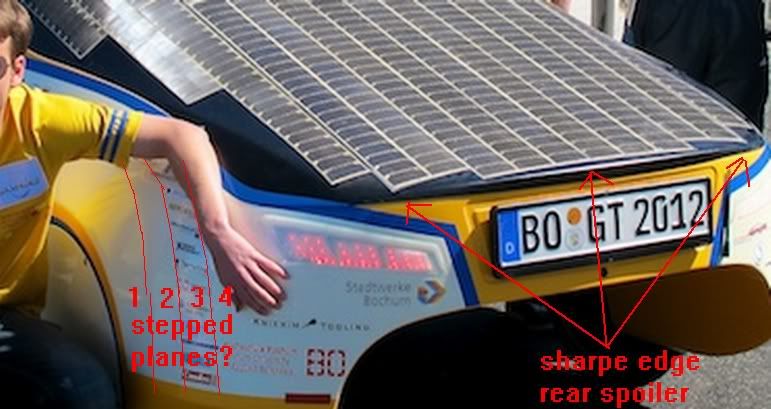Quote:
Originally Posted by NeilBlanchard

The red lines are on the area where I suspect is causing the most drag:


The sides should come to as sharp an edge as the top does, and the curve should be larger radius. The rear wheel track should be narrowed to allow the sides to taper in, and the rear wheel strakes could be narrower. |
Looking at the university's earlier cars indicates that these folks are plenty acquainted with how to get low drag.
Without a look under the skin I'm not gonna try 'n guess about the design.
Many of the past solar champions had Cds of 0.13,0.12,and 0.10 (HONDA Dream 2),so there seems to be a specific reason for the 0.14 compromise.
I'm gonna go to Fort Worth to T.C.U. on the 23rd and have a look.
Years ago,the N.American Solar Challenge came through Weatherford College,Texas and all the cars pulled there bodies off to orient into the afternoon sun to charge for the next day's run.
There should be ample time to look at the guts of the car.
One thing to mention.All the cars a few years back ran Bridgestone's Ecopia Solar Race 20" race tire exclusively.These tires are slicks,are very gummy,and have a useful lifespan of only 200-miles before they must be changed.
Having easy-to-get-to wheels,even if they cost extra drag,could provide a competitive edge in competition.Everyone has seen pit-stops at Indianapolis 500 and NASCAR,yes?